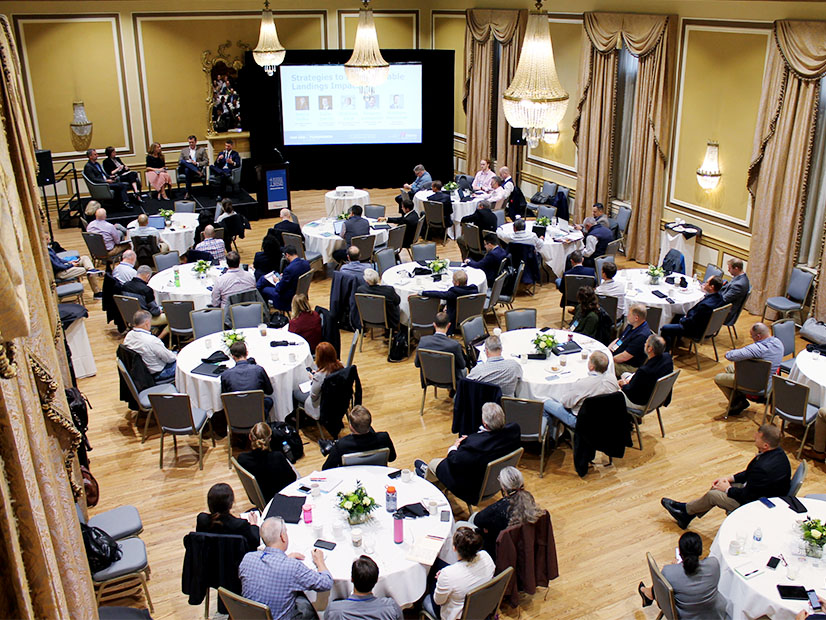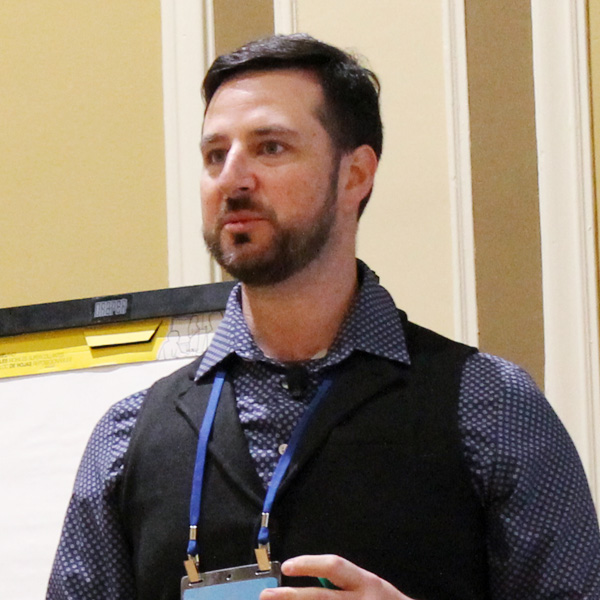
CHARLESTON, S.C. — Offshore wind and transmission developers say the states that are driving project development need to lead on the transmission side by collaborating to build an offshore grid.
That was the consensus that seemed to form at the Business Network for Offshore Wind OSW Grid & Transmission Summit last week as attendees brainstormed the most cost-effective way to interconnect the massive amounts of offshore wind states are procuring to meet their decarbonization goals.
The summit was held over two days at the Francis Marion Hotel to discuss strategies for offshore transmission development, mostly on the East Coast.
Rather than the typical format for an energy conference, the Business Network tried something different for the first day: a marathon series of discussions among the audience, mostly about the offshore wind industry’s dream: a “backbone” transmission line along the East Coast, from Maine to Florida, connected to the onshore Eastern Interconnection and allowing offshore wind projects to “plug and play.”
Such a “mesh-ready” system would save all stakeholders — states, developers, utilities and ratepayers — money on costly onshore transmission upgrades and allow projects to provide more capacity, speakers said.
 Jason Gershowitz, principal at Kearns & West, led attendees of the summit in a series of free-wheeling discussions Nov. 9. | © RTO Insider LLC
Jason Gershowitz, principal at Kearns & West, led attendees of the summit in a series of free-wheeling discussions Nov. 9. | © RTO Insider LLCThe discussions were held under the Chatham House Rule: Attendees were free to use the information but not to reveal who provided it at the meeting. (As such, RTO Insider can not quote anyone who spoke.) Jason Gershowitz, principal at Kearns & West, lightly guided attendees as they traded tales of their experiences getting their projects built — the challenges, setbacks and successes. They also debated what is needed going forward and offered solutions for observed problems.
Also in attendance were state and federal officials charged with implementing their governments’ goals, as well as European developers.
What played out was an exercise in problem solving among players in a nascent industry still struggling to find its sea legs.
Bottom-up Collaboration Needed
The problems with offshore transmission development are similar to those onshore in the U.S.: diverse state policies and goals; clogged supply chains; different standards and rules in each grid operator; and opposition by not-in-my-backyard residents.
While FERC has instituted several proceedings seeking to encourage interregional transmission development onshore and make it easier for generators to interconnect to the queue, it has not sought an active role in offshore transmission. Judging by several comments at the conference, that isn’t necessarily desired. Though attendees did not come to any hard solutions, they agreed that there needs to be a bottom-up approach among stakeholders, not a top-down mandate from the federal government.
Currently, each state that is procuring offshore wind is soliciting transmission solutions on its own. There seemed to be some reluctant acceptance among attendees that the New Jersey Board of Public Utilities’ recent selection of the Larrabee Tri-Collector Solution — which will only involve onshore transmission upgrades and a new substation — was the state’s only real option given the costs of offshore transmission and lack of proposals for an offshore backbone. (See NJ BPU OKs $1.07B OSW Transmission Expansion.)
States are also very protective of the benefits that will come with the projects, especially the construction, manufacturing and shipping jobs, and they are competing among themselves for manufacturing and logistics hubs at their ports. Several attendees suggested pressuring states to put aside competition and collaborate on building an offshore grid that would benefit all involved. The states could form a coalition, laying out a clear goal and agreeing to share costs.
Others suggested that the three grid operators along the East Coast — ISO-NE, NYISO and PJM — come together, perhaps with a “nudge” from FERC, to independently plan an offshore grid. Still, states would need to play a key role in pushing the RTOs and FERC to work together. Here the challenge is a lack of consistency — as well as the inevitable difficulty of getting three different stakeholder bodies to reach agreement.
Still others suggested that wind developers themselves should collaborate among themselves rather than wait for the state governments to fix things for them. Developers could propose joint transmission solutions that incrementally build the backbone.
Several Europeans in attendance seemed bewildered that U.S. states with similar clean energy policies, such as those in New England, could not come together like countries in the North Sea — such as Belgium, the Netherlands, Germany, Denmark and Norway — which recently committed to building an offshore network in the sea by 2050.
Not Enough People
The attendees also discussed the lack of workers to fill all the open positions in the offshore wind field.
The industry began by picking off workers from the offshore oil and gas industry for their expertise in ocean construction and operating marine vessels. It then began enticing more with promises of training for industry-specific jobs.
Now that that labor pool has been exhausted, several attendees noted, developers are recruiting workers from competitors with hefty signing bonuses.
Attendees said there needs to be more engagement with students in high school and lower grades to encourage them to study electrical engineering and other related fields in college. One attendee, however, noted that it’s difficult to get children excited about infrastructure.



